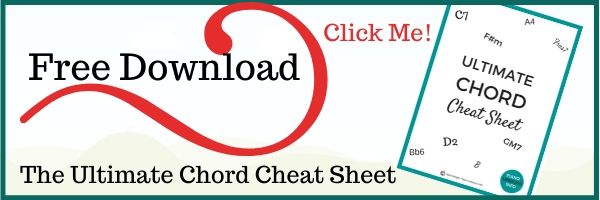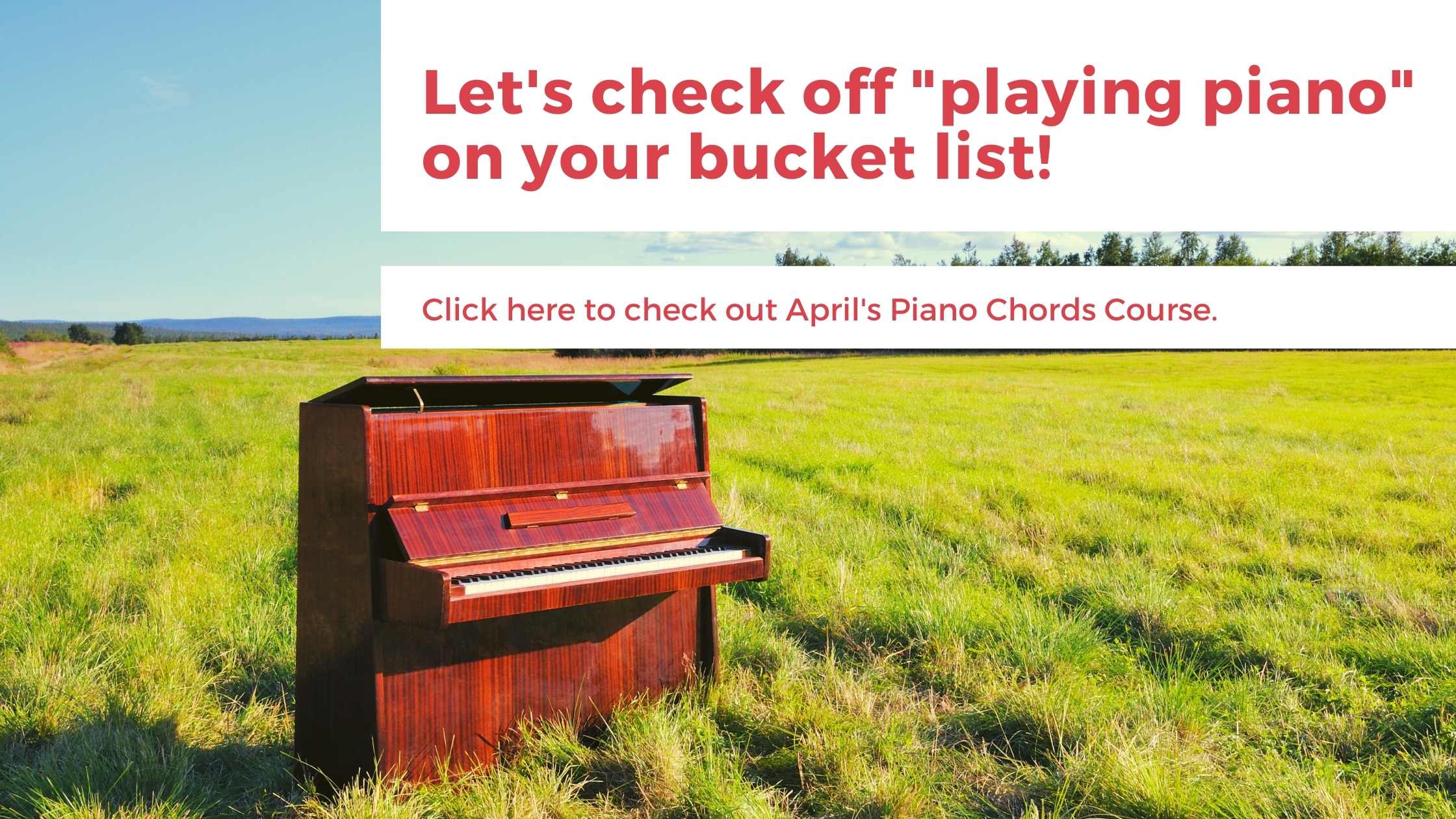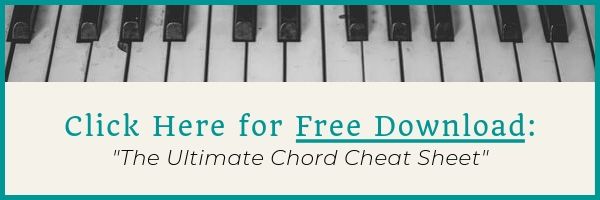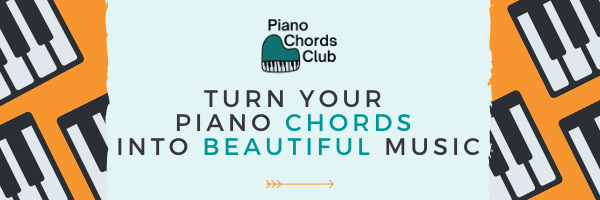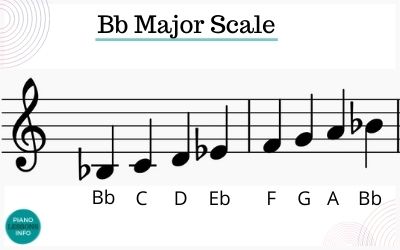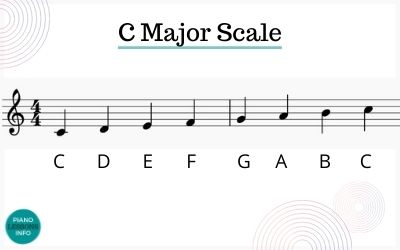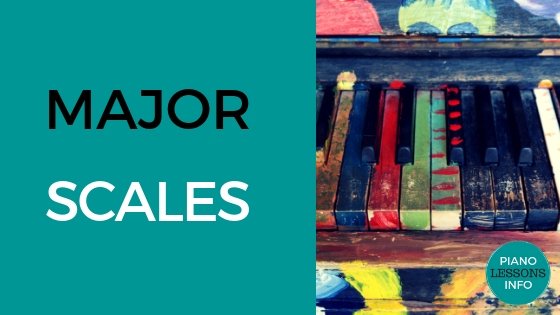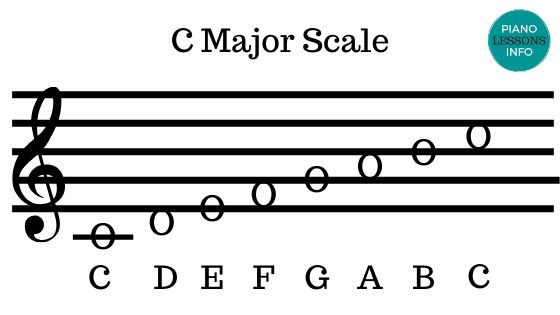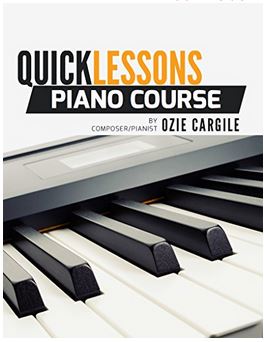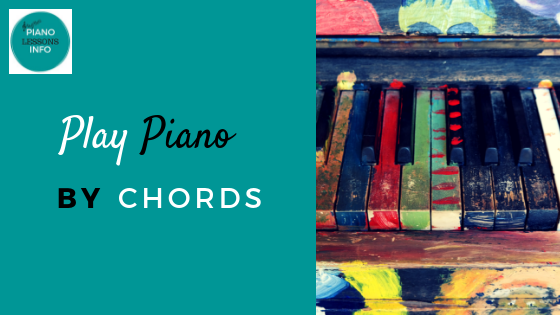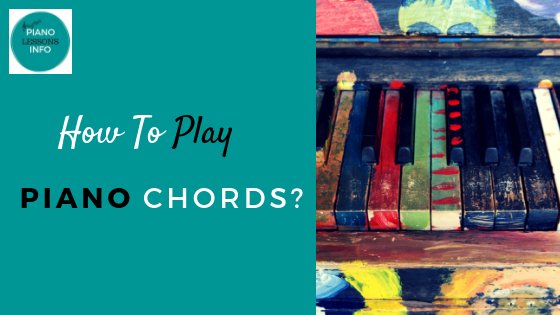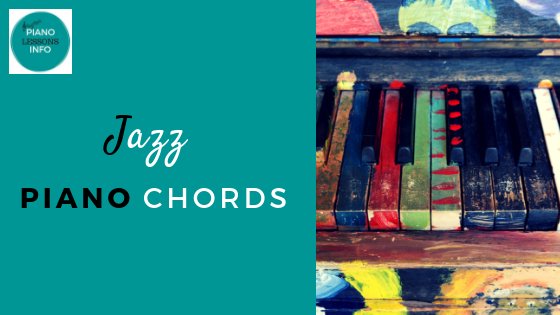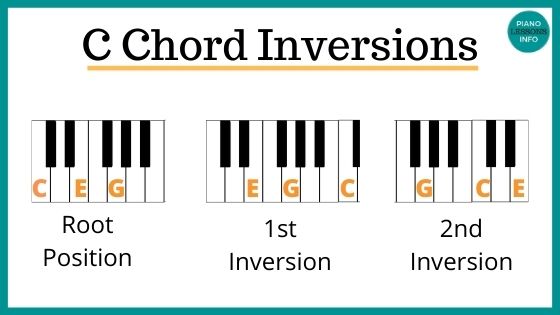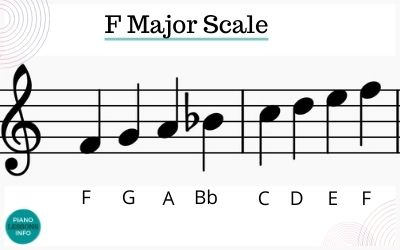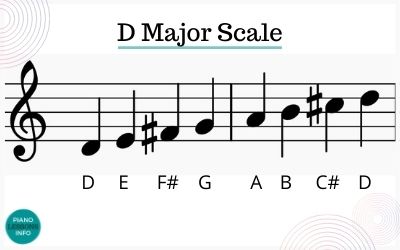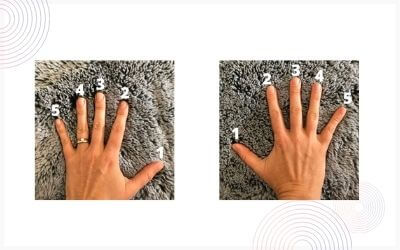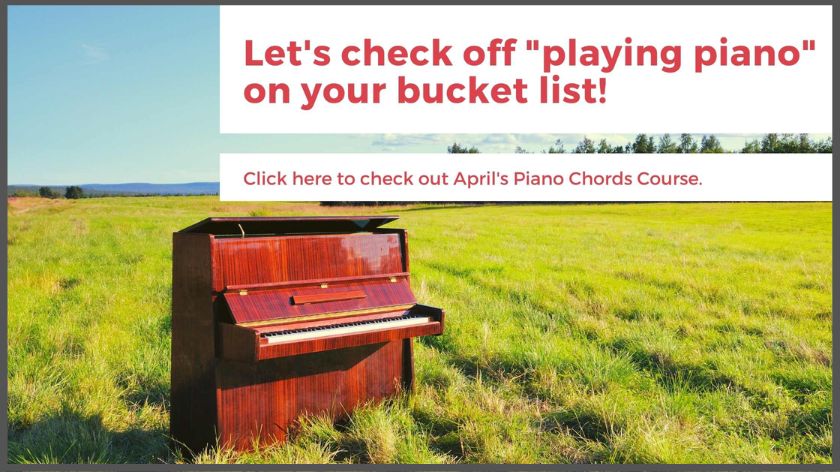11 Different Ways To Practice Piano Scales
There are lots of different ways to practice piano scales and how you play your scales today won't be the same as you practice them next year. So it's great to learn a number of different ways to practice them.
Here we'll go through the various ways you can practice scales starting with beginners, intermediates and moving on up from there. At the end, you'll find a number of techniques to use at any level.
Ways To Practice Scales - Video Lesson
Level 1: First 5 Notes
If you are a true beginner, the best way to start playing a scale is just by playing the first 5 notes of a scale.
For the C major scale, this would be C-D-E-F-G.
Use all you five fingers and play it hand separately.
This is a great exercise to start your fingers moving. It won't take you too long to get used to and once you do, move onto playing the C major scale, one octave and hands separately.
Level 2: One Octave, Hands Separate
The first main way to practice a scale is just one octave (8 notes, from C to C for example) and one hand at a time.
When I teach scales, we start with going up first. Just the basic C major scale, going up.
You can start by playing it ascending with your right hand and then with your left hand.
Once you're comfortable with that, you can go back down again.
You can use the C major scales page for fingering and the notes to play here.
Your end goal for this level: play the C major scale going up and down, hand separately, nice and smooth with no pauses as you play.
Level 3: Two Octaves, Hands Separate
After you've gotten your scales down for one one octave, the next step is learning the fingering for 2 octaves. Play the scale 2 octaves, hands separately.
At this stage, you can also start taking note of your speed and using a metronome.
Using a metronome (free online metronome here) will help you to keep your notes even and smooth. If you find it's too fast, slow it down until it's manageable and work at that speed. Then bump it up. You want to stay in control.
Goal for this level: play a 2 octave scale hand separately (and nice and evenly). Suggested scales: G, D, A, C, and more challenging: F and Bb. (See the major scales page for more on these.)
Another way to make this easier is by purchasing a scales book on Amazon. This is the Scales Book I recommend (and it's an affiliate link that'll earn me a teeny commission).
Level 4: One Octave, Hands Together
One of the important ways to practice scales on piano is hands together! This is great for hand coordination and for figuring out which hand (generally the left) might need a bit of extra attention.
What you need to do here is practice your one octave scale hands together. Start with C major scale and with going up only.
After you're comfortable with that, start going back down again.
Once you get to the top of your scale, head straight back down without stopping. Think of it as a sentence and you don't want to stop in the middle of it.
Goal for this level: play a one octave scale (up and down), hands together, with no stopping or starting, nice, smooth and even. Start with C and also try G major scale.
Level 5: Two Octaves, Hands Together
Once you have gotten to this point, you're in business! 2 octaves, hands together, you've got everything you need now to practice and learn all the major and minor scales.
This is also where learn your scales hands separately really starts to play off. You do start to rely on muscle memory and the patterns of playing scales at this point.
If you're at this point where you are playing or ready to play scales, two octaves and hands together, your goals are two-fold:
- work on speed
- work on learning all the major and minor scales
You want to know the scales now and also to start playing them quickly (as in speed while playing). Choose a couple scales at a time to really start working on and then switch it up.
When you learn classical piano, you don't really need to play all the scales at the early stages. The difficulty progresses with the grade. So a scale like Gb major, comes much later down the line. But you decide what you want to do in your situation.
If you are working on learning chords and written music, learning all the major scales will greatly benefit what you do, learn and play. So I recommend learning them all to the point where you know the notes of the scale, even if you aren't very quick at playing them.
End goal for this level: play all the major scales, hands together. Try for a speed of 160 ( beat per note) for the easier scales.
Level 6: Contrary Motion
An interesting way to practice scales is with contrary motion. This means one hand goes one way (up) while the other hand goes the other (down).
You can do this with one octave to start with and then move on to 2 octaves.
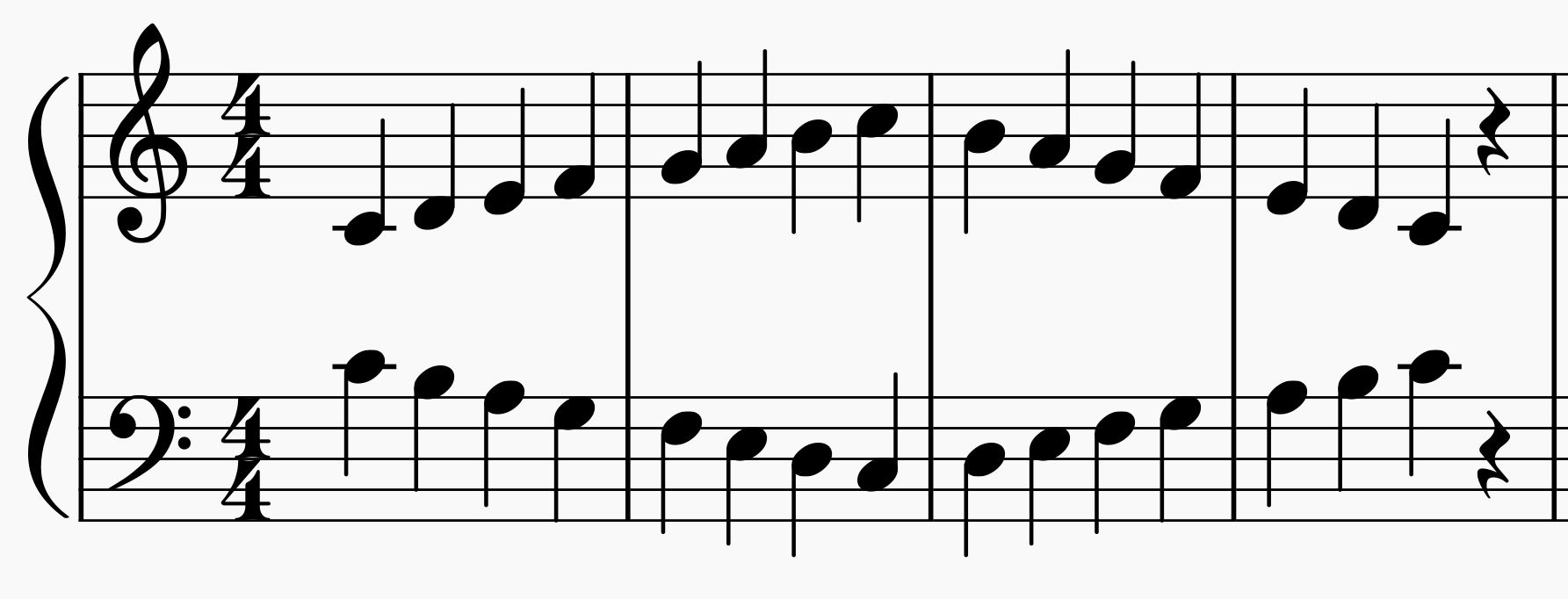 C Major Scale, One Octave, Contrary Motion - Ways To Practice Scales
C Major Scale, One Octave, Contrary Motion - Ways To Practice ScalesFinal Level: Play Scales in Thirds
A nice way to practice scales, once you're really comfortable with them, is to play them in thirds. This is actually my favourite way because I really enjoy the harmony.
To do this:
- use your normal scale fingering
- left hand plays the bottom and starts on the root note of the scale
- right hand plays the top and starts a third above the root note of the scale
When you get to the end, you don't always land on the finger you should but if you got there and it sounded good, then you're all good!
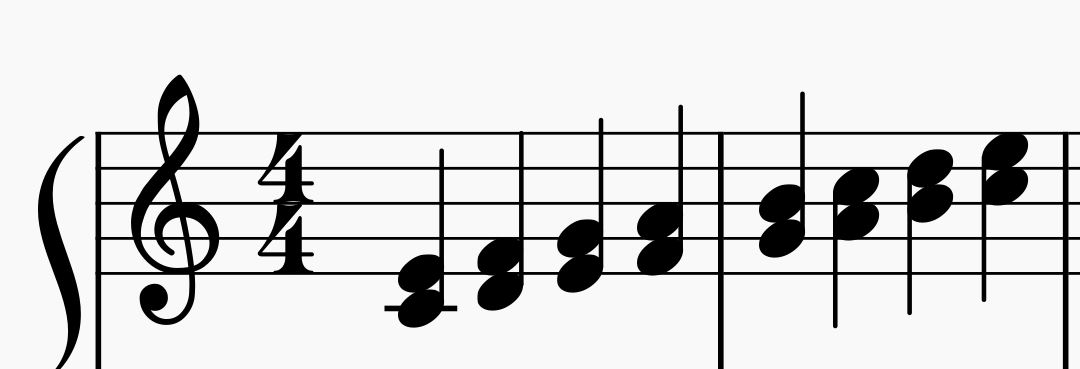 Play Scales in Thirds - Ways To Practice Scales
Play Scales in Thirds - Ways To Practice ScalesPlaying scales in thirds was one of the last things I learned (and I figured they were just trying to find a way to make it interesting). So there's no rush to get to this point. It probably took me 10 years to get here.
But it sounds nice!
Additional Ways to Practice Scales
Can Be Used In Any of the Above Levels
Add Rhythm To Your Scale
|
One special trick my piano teacher taught me was to play a scale in a consistent but uneven rhythm. This helps with speed. Using a dotted 8th note and 16th note (see picture) or 16th note and dotted 8th works well. (See the video at the top of the page to see this in action). |
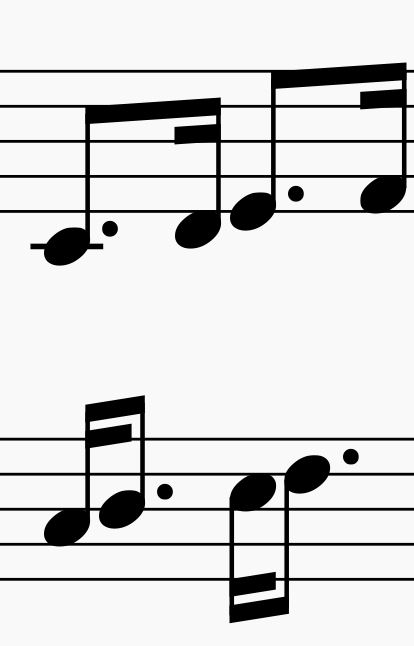 |
Play a Scale Staccato
Playing a scale staccato - which is a term for very short - is a great way to practice both your scales and staccato technique.
Play every note extremely short.
You won't be able to play this as quickly as normal but you can also work on your speed with staccato notes. (Just watch the tension in your arms and keep them loose here. Stop and shake them out if you need to.)
Play Your Scale Legato
Another way to play a scale is legato or smoothly. This is likely how you're already playing but we can take it up a notch and see how rich and flowing you can make it.
One of the words I use here is "sticky". See how sticky you can make your scale. As in, how long can you hold onto your notes before smoothly playing the next one.
Add In Dynamics
Play your scale loud! (ff)
Play your scale soft. (pp)
Use a crescendo and get steadily louder as you ascend and then a decrescendo - steadily softer as you descend. This is a great challenge for 2 octave scales.
Light Scales, Heavy Scales
My final suggestion (for now) on how to practice scales is to play them heavy or light.
When you play a scale with heavy fingers, you can think of it as big giant footsteps going down. It's not necessarily loud we're going for here but heavy. Putting a lot of weight into your fingers.
The other side of this is to play your scales light and airy. This comes in handy if you're playing any music from the Classical Era (Mozart, Beethoven, etc).
Think of this as having lots of air between your fingers when you play. You are going for light but that doesn't mean quiet. It's airy and quick.
So Many Ways To Practice Scales!
There are so many different ways to practice scales. Work steadily at the level you're at now and then move forward from there.
I hope you found some helpful tips and techniques here. Let me know which one was your favourite!
Recent Articles
-
Piano Notes Chart
Nov 20, 23 10:21 PM
Find a piano notes chart for treble clef and bass clef notes as well as the different types of notes. -
D Chord on Piano + Diagram, How To & Theory
Oct 24, 23 12:20 AM
Learn how to play the D chord on piano with diagram, fingering, D/A, D/F# and a theory explainer. -
Diminished Piano Chords: Chart & How to Make Them
Oct 09, 23 09:23 PM
Learn the different diminished piano chords and how to make them. Here you'll find both a diminished chord chart and an explanation.
Free Download:
Ultimate Chord Cheat Sheet
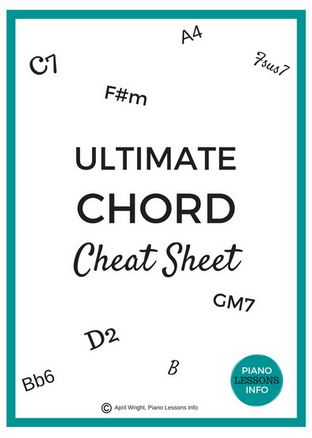
Subscribe below and get free access to the (printable) Ultimate Chord Cheat Sheet.
